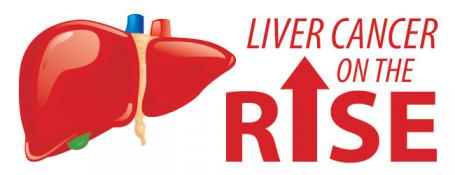Liver Cancer on the Rise
New Comprehensive Study Shows Overall Cancer Deaths Down, With Liver Cancer as the Concerning Exception

Recently, the National Cancer Institute released its Annual Report to the Nation on the Status of Cancer. Alarmingly, the report shows that liver cancer-related death rates were highest among people who have had hepatitis B and C.
This is preventable. There has been a vaccine to prevent hepatitis B since 1991, and new drugs for hepatitis C can cure 90% of cases but many people do not know they have it. Hepatitis C can remain silent in a person’s body for decades with symptoms often emerging in late stages of liver disease.
In addition to hepatitis, steatotic liver disease (previously known as nonalcoholic fatty liver disease or NAFLD) increases the risk for liver cancer, and, for those already diagnosed, reduces the chances for survival. Researchers at last year’s International Liver Congress meeting reported that survival is shorter for patients with steatotic liver disease who develop cancer than it is for patients with hepatitis B or hepatitis C who develop liver cancer.
In fact, steatotic liver disease is emerging as a major cause of hepatocellular carcinoma in the United States; a recent study found that in a five-year period (2004 to 2009), the annual increase in hepatocellular carcinoma in steatotic liver disease patients was approximately 5%.
With as many as 4 million Americans infected with hepatitis C (75% of them do not know they have it), plus the 30% of Americans who have some form of steatotic liver disease (this number is poised to reach 50% by 2030), clearly there is cause for concern.
The American Liver Foundation is the country’s only nonprofit organization exclusively dedicated to promoting liver health, as well as education, support and research for the prevention, treatment and cure of liver disease. Learn more about who we are and what we do here.
To read the report, click here.
To learn more about liver cancer, click here.
Medically reviewed on April 2025.
Last updated on August 14th, 2025 at 12:42 pm